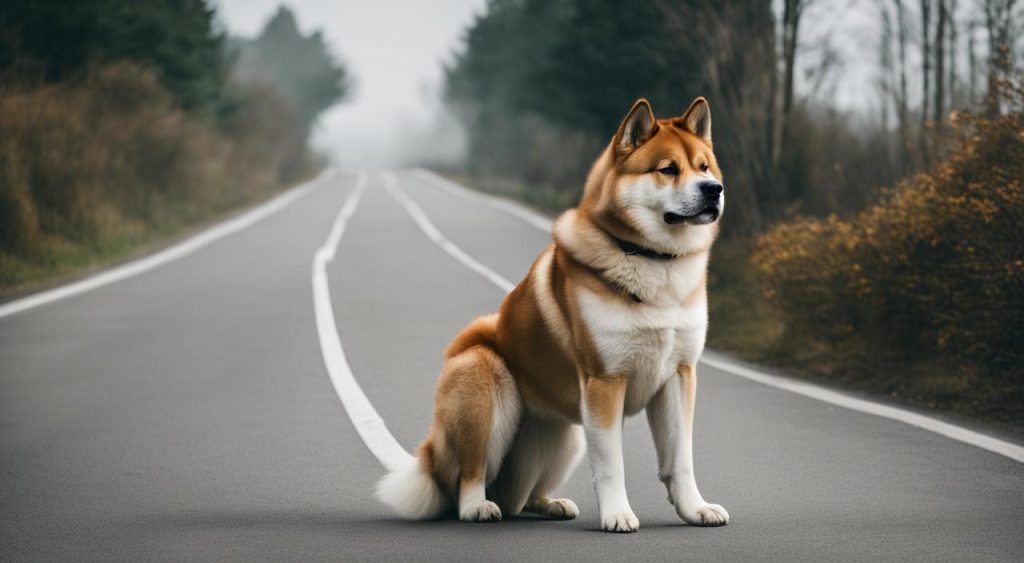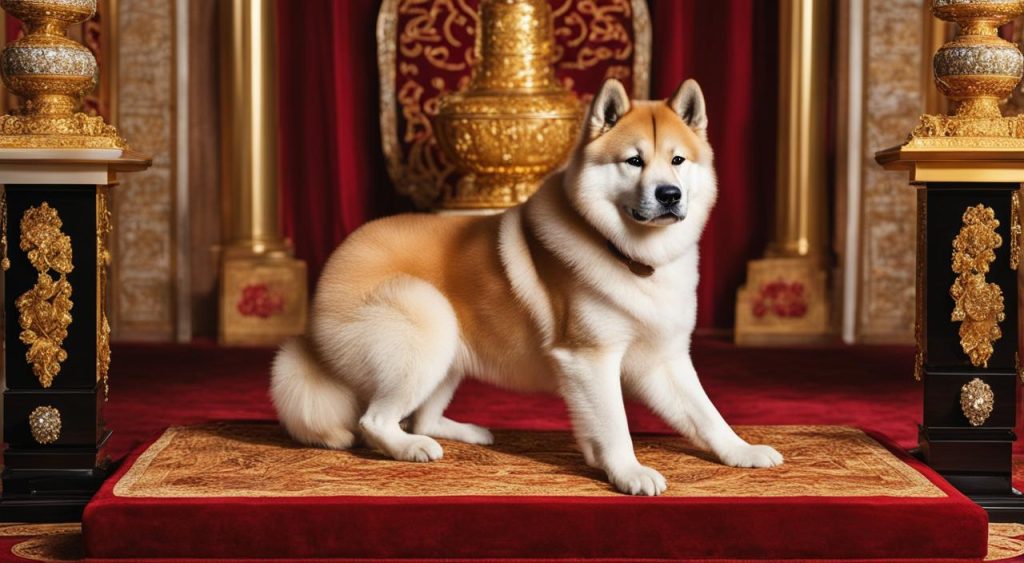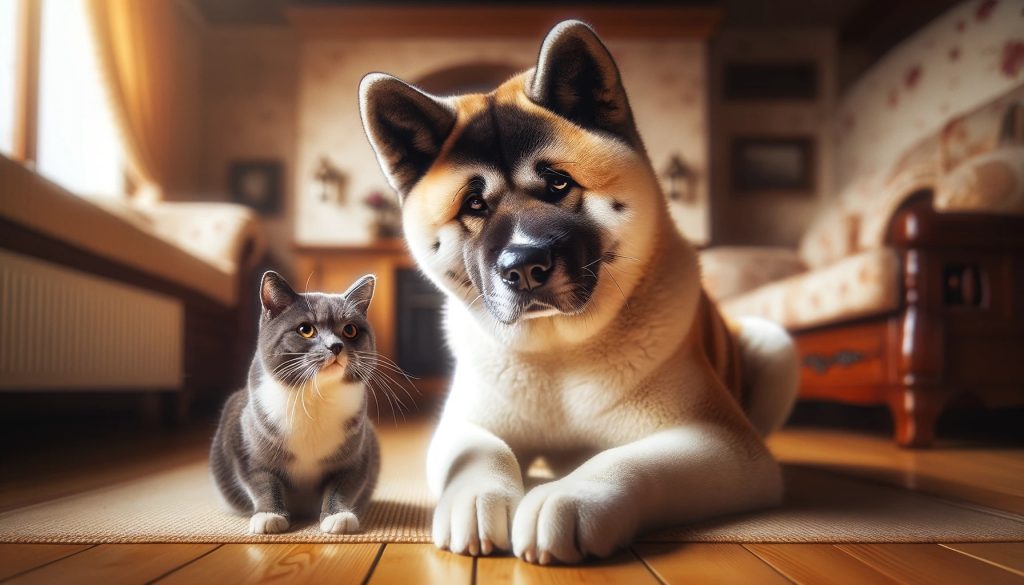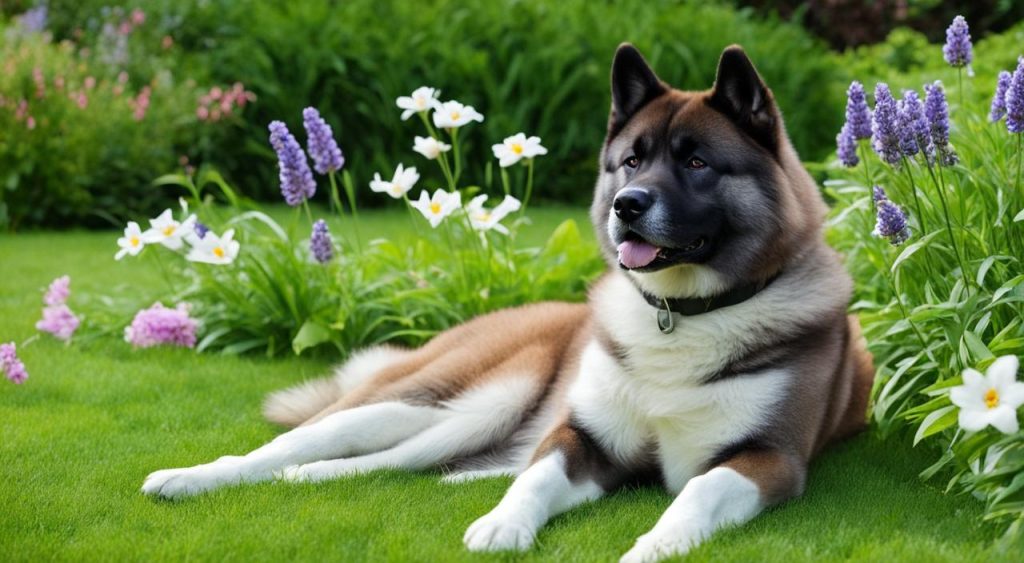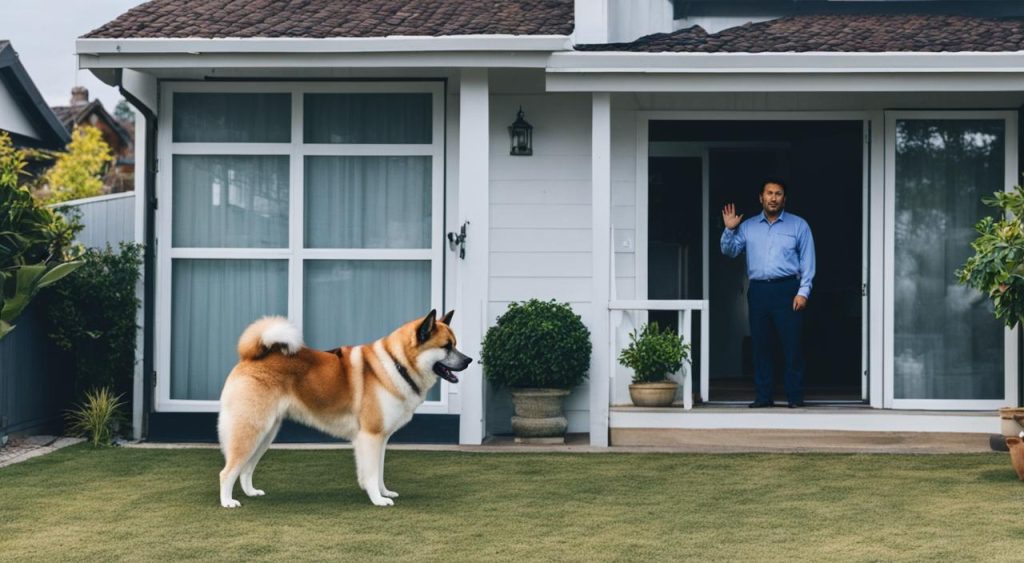The Akita is a powerful and ancient breed that originated in Japan. They were originally bred to hunt large prey like wild boar and bears. Akitas tend to think for themselves and can be wary of strangers. While they are extremely affectionate with family, they can display aggressive behavior towards other dogs and in certain situations. It is important for Akita owners to understand the reasons behind their dog’s aggression and learn effective strategies for managing and preventing it.
Key Takeaways:
- Akitas are a powerful and ancient breed with a propensity for aggression.
- They were originally bred to hunt large prey and have strong guarding instincts.
- Akitas can display aggressive behavior towards other dogs and in certain situations.
- Understanding the underlying causes of aggression is crucial for managing and preventing it.
- Seeking professional guidance and training classes specializing in aggression can be beneficial.
Understanding Akita aggression
Akitas are known for their dominance tendencies and strong guarding instincts. Handling an aggressive Akita can be challenging, especially for novice dog owners. To effectively train and manage their behavior, it’s crucial to understand why an Akita is expressing aggression and how to address it.
Aggression in Akitas often manifests towards same-sex dogs and can stem from dominance issues. As an owner, it’s important to set realistic training goals and prioritize the safety of your dog as well as others around them.
Muzzle training is a valuable tool for managing an aggressive Akita. By properly acclimating your Akita to a muzzle, you can ensure a safer environment while working on their aggression. Additionally, understanding what motivates your Akita’s aggression can help redirect their behavior.
Teaching an Akita when to be aggressive can be more successful than attempting to eliminate aggression entirely. With proper training and reinforcement, you can control their aggression and create a harmonious environment for both your dog and others.
If you’re struggling with managing an aggressive Akita, seeking the guidance of a certified dog behavior consultant or enrolling in specialized training classes is highly recommended. These professionals can provide expert advice tailored to your Akita’s specific needs.
Remember, consistency and patience are key when dealing with an aggressive Akita. By implementing effective training techniques and seeking professional help, you can find solutions to manage and redirect their aggression.
Strategies for Managing and Preventing Akita Aggression
When dealing with an aggressive Akita, it is important to seek guidance from a certified dog behavior consultant or enroll in training classes that specialize in dealing with aggression. They have the expertise and experience to assess the underlying causes of aggression and provide effective strategies for managing and preventing it.
In addition to professional help, providing adequate exercise and enrichment activities for your Akita can help channel their energy in a positive way. A tired Akita is less likely to engage in aggressive behavior. Regular walks, play sessions, and interactive toys can all contribute to their physical and mental well-being.
Maintaining a calm and assertive demeanor around your Akita is crucial. Dogs are highly sensitive to human emotions, and your attitude can influence their behavior. Positive reinforcement is also key in training an aggressive Akita. Rewarding good behavior with treats, praise, or playtime can motivate them to continue behaving well.
It may be necessary to use management techniques to separate your Akita from potentially triggering situations. Puppy gates or crates can provide a safe space where they can relax and decompress without feeling threatened. This is especially helpful when introducing your Akita to new people or animals, as it allows for controlled interactions.
If the aggression is sex-based, spaying or neutering your Akita may be recommended by professionals. This can help reduce hormonal influences and alleviate aggressive tendencies. It is important to consult with your veterinarian to determine if this is the appropriate course of action for your dog.
Remember, safety should always be your top priority when dealing with an aggressive Akita. Avoid putting yourself or others at risk by using caution, implementing management techniques, and seeking professional guidance. With patience, consistency, and the right strategies, you can effectively manage and prevent Akita aggression, ensuring a harmonious relationship with your furry companion.
Conclusion
Managing aggression in Akitas can be challenging, but it is not impossible. By understanding the underlying causes and implementing the right training strategies, you can effectively manage and prevent aggressive behavior in your Akita. Consistency, patience, and seeking professional guidance are crucial in this process. Always prioritize safety and consider the well-being of your Akita, as well as other people and animals.
With the right approach, you can create a harmonious relationship with your Akita and prevent aggressive incidents. Remember to remain calm and assertive, use positive reinforcement, and reward good behavior. Enrolling in training classes that specialize in dealing with aggression or seeking guidance from a certified dog behavior consultant can provide invaluable support.
Additionally, providing your Akita with adequate exercise and enrichment activities can help channel their energy in a positive way and reduce the likelihood of aggression. Consider using management techniques like puppy gates or crates to separate your Akita from potential triggers. Spaying or neutering may also be recommended by professionals if the aggression is sex-based.
By taking these proactive steps and adopting an informed and responsible approach, you can effectively manage your Akita’s aggression, ensuring a safe and harmonious environment for everyone involved.

